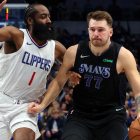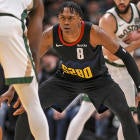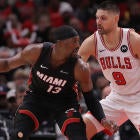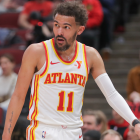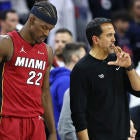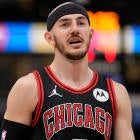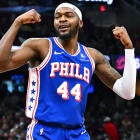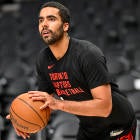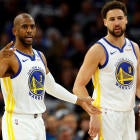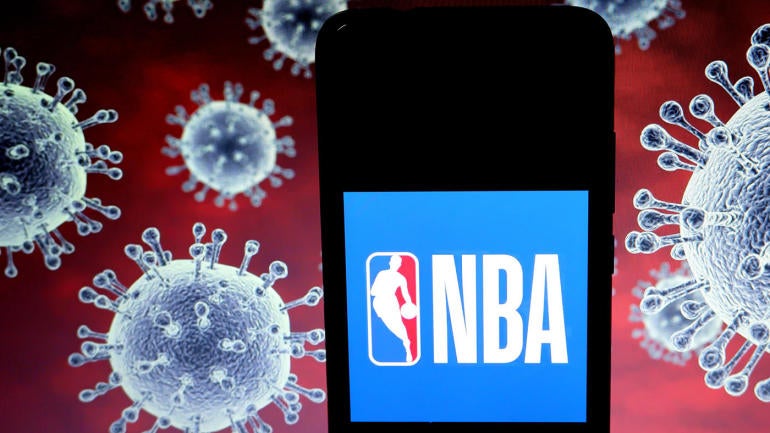
The Florida Department of Health reported a terrible milestone on Monday: The state has passed 100,000 confirmed COVID-19 infections. New cases have been trending up for more than a month, and in recent days the positive test rate has been roughly 12 percent. Beginning on July 7, 22 NBA teams will travel to Orlando to prepare for the resumption of the 2019-20 season.
In a phone interview, Zach Binney, an epidemiologist at Oxford College of Emory University, called this combination of facts "really, really, worrying." He said the NBA hadn't done anything wrong, but "I'm afraid it's all about to go pear-shaped anyway."
Binney initially thought it was reasonable for Disney personnel to enter and exit the campus every day, given the mitigation procedures: a lack of face-to-face contact with players, required use of face coverings and symptom screening. Now, the increased number of infections means that the baseline chance of a staffer being infected will be significantly higher, as will the difficulty of preventing an outbreak in the NBA. Binney borrowed a metaphor from the team executive that called the campus a "mesh hat" rather than a "bubble" in a story by NBC Sports' Tom Haberstroh.
"If it's drizzling, maybe your head can stay dry," Binney said. "If it's pouring, that's a really hard ask for a mesh hat."
It is a "full-on rainstorm" in Orlando, in Binney's estimation.
The test-positive rate in Orange County and Orlando "indicates that there is rampant viral spread and that there aren't enough tests in that area to do what needs to be done and to keep track of the virus," he said. He expects that any expert looking at these numbers would be "very concerned" about the situation potentially getting much worse before it gets better.
"This epidemic is like a train," Binney said. "You can't just hit the breaks and stop it immediately. It takes time because it spreads fairly easily and it takes a while to show itself. Those are the two really insidious things about this particular virus that make it really hard to control. By the time you're seeing 12 percent-plus positive and 4,000 cases a day in Florida, it's out there. The horse is out of the barn and you're going to have a heck of a time getting it back in. [That] is my fear."
The variables to watch are the number of active cases, the test-positive percentage, hospitalizations, hospital capacity and ICU capacity. "There is no single magic number or single barrier that you break and then it's fine, or, on the other side of it, it's horrible," he said. "It's all a continuum." Potential on-campus infections aside, players will get hurt and some of them will need to visit a hospital.
"If the medical system is completely overwhelmed, you can't have a league," Binney said. "You could not in good conscience have the NBA if ICUs are full and they're putting bodies in refrigerated morgue trucks in Orlando."
By setting up a rigorous testing program, the league implicitly assumed that there would be enough tests for the general population. That could change, at which point "I don't know how you can bring over 1,000 NBA players and staff to Orlando and be testing them every day and just twiddle your thumbs at the situation around you," Binney said. "I think that's really ethically questionable."
The NBA has enough time to try to turn the mesh hat into a real bubble. It would be expensive and logistically difficult, but, even if things stay about as bad as they are rather than getting a lot worse, Binney said that housekeepers, food-service staff and bus drivers would need to be tested every other day "at the absolute minimum" in order to be confident that a reasonable percentage of cases would be caught.
As tight as the NBA makes its restrictions, the local number of infections, testing capacity and hospital capacity will be out of its hands. "It's going to rely on policy responses and individual choices," Binney said, and he has a message about the latter: "If you want sports back, you have to get this thing under control. You can't shortcut it. You can't sidestep it. It's a force of nature." Recent surges suggest "we just don't seem to have the patience for that."
The NBA's 113-page health and safety plan does not include any protocols about shutting the season down again. After spending months figuring out how to make the Disney experiment work, it's unclear what exactly would have to happen to make the league abandon ship -- and forgo the money it is counting on.
In Binney's view, it might not be reasonable to expect a black-and-white rule in such a fluid and complicated situation. He recognizes, however, that the NBA has enormous incentive to play the games, so the responsibility should fall to the Florida Department of Health.
"In an ideal world, I would be able to trust them completely," Binney said. "But in as polarized a world as we live in, I think it would be reasonable to have some concerns about them being able to play that role very clearly, particularly given the other elements of the state government of Florida."
On Saturday, Florida Governor Ron DeSantis acknowledged that the rising number of cases could not be solely attributed to increased testing, a reversal of comments he'd made days earlier. Last week, a report from scientists at Children's Hospital of Philadelphia and the University of Pennsylvania said Florida had "all the makings of the next large epicenter." As part of Phase 2 of the state's reopening plan, 64 of 67 counties, including Orange County, are allowing people to dine indoors and allowing gyms and retail stores to operate at full capacity. If the state is planning another lockdown, DeSantis has not yet said so.
Binney wondered whether or not the NBA would be capable of setting up a truly independent medical board to assess the overall safety of the plan, similar to the "physician panel" that will determine whether players and staff are high-risk. These public-health experts would need to be paid ahead of time and be assured that the league would not interfere with their decision or retaliate against them if they were to say the plug should be pulled.
"Maybe you could have one person with a lot of NBA or sports subject-matter expertise, and then the others are public-health professionals that have shown absolutely no interest in sports their whole lives," Binney said. He laughed, then continued: "They exist. Trust me, they exist."
As a sports fan and a public-health expert himself, Binney has found himself in a weird position. He wants sports to come back, and he feels awful for the NBA because he thinks it did outstanding job with the protocols. "But I'm a human being first," he said, and he feels worse for the people of Orlando. If the choice is between contributing to an explosive pandemic and keeping people safe, he would like to think he knows where he stands.
"The NBA has done everything it can," Binney said. "It's just the virus doesn't care. The virus is going to do what the virus does."














